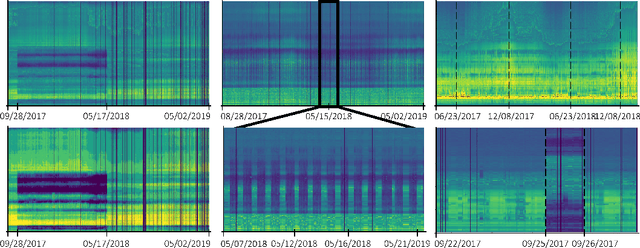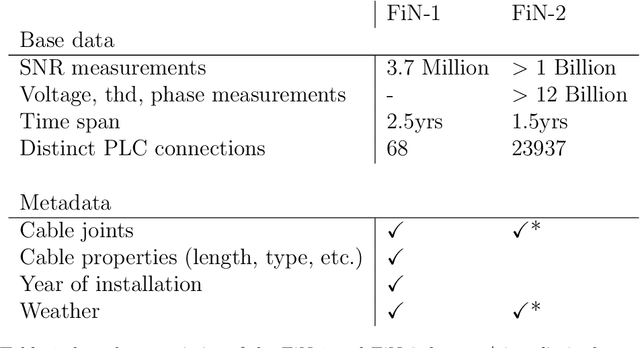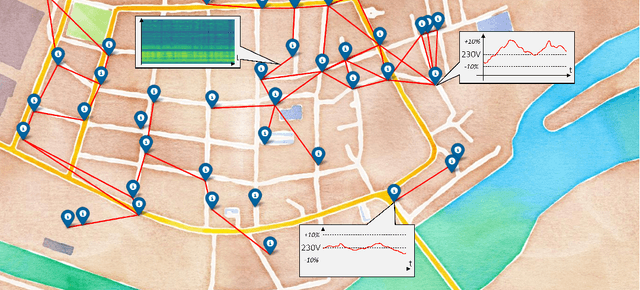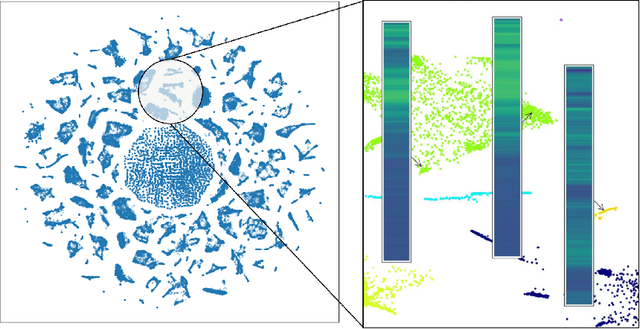Markus Zdrallek
On autoregressive deep learning models for day-ahead wind power forecasting with irregular shutdowns due to redispatching
Nov 30, 2024Abstract:Renewable energies and their operation are becoming increasingly vital for the stability of electrical power grids since conventional power plants are progressively being displaced, and their contribution to redispatch interventions is thereby diminishing. In order to consider renewable energies like Wind Power (WP) for such interventions as a substitute, day-ahead forecasts are necessary to communicate their availability for redispatch planning. In this context, automated and scalable forecasting models are required for the deployment to thousands of locally-distributed onshore WP turbines. Furthermore, the irregular interventions into the WP generation capabilities due to redispatch shutdowns pose challenges in the design and operation of WP forecasting models. Since state-of-the-art forecasting methods consider past WP generation values alongside day-ahead weather forecasts, redispatch shutdowns may impact the forecast. Therefore, the present paper highlights these challenges and analyzes state-of-the-art forecasting methods on data sets with both regular and irregular shutdowns. Specifically, we compare the forecasting accuracy of three autoregressive Deep Learning (DL) methods to methods based on WP curve modeling. Interestingly, the latter achieve lower forecasting errors, have fewer requirements for data cleaning during modeling and operation while being computationally more efficient, suggesting their advantages in practical applications.
Leveraging the Potential of Novel Data in Power Line Communication of Electricity Grids
Sep 23, 2022



Abstract:Electricity grids have become an essential part of daily life, even if they are often not noticed in everyday life. We usually only become particularly aware of this dependence by the time the electricity grid is no longer available. However, significant changes, such as the transition to renewable energy (photovoltaic, wind turbines, etc.) and an increasing number of energy consumers with complex load profiles (electric vehicles, home battery systems, etc.), pose new challenges for the electricity grid. To address these challenges, we propose two first-of-its-kind datasets based on measurements in a broadband powerline communications (PLC) infrastructure. Both datasets FiN-1 and FiN-2, were collected during real practical use in a part of the German low-voltage grid that supplies around 4.4 million people and show more than 13 billion datapoints collected by more than 5100 sensors. In addition, we present different use cases in asset management, grid state visualization, forecasting, predictive maintenance, and novelty detection to highlight the benefits of these types of data. For these applications, we particularly highlight the use of novel machine learning architectures to extract rich information from real-world data that cannot be captured using traditional approaches. By publishing the first large-scale real-world dataset, we aim to shed light on the previously largely unrecognized potential of PLC data and emphasize machine-learning-based research in low-voltage distribution networks by presenting a variety of different use cases.
 Add to Chrome
Add to Chrome Add to Firefox
Add to Firefox Add to Edge
Add to Edge